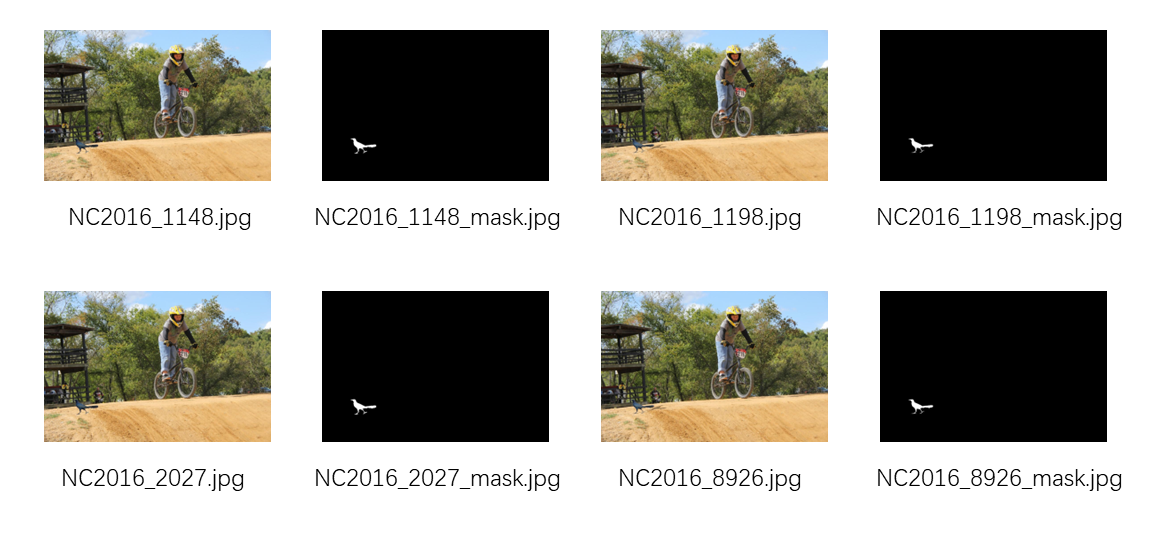This repository includes resources below:
- NIST16 Image Tampering Detection Evaluation Dataset.
- Ground-truth of NIST16, Accurate labels or data used to train and evaluate models.
The NIST16 data set is a commonly used tamper detection data set, containing 564 tampered images, in which the tampering types of copy-move, splicing and Inpainting are distributed. And compared to other tampering detection data sets, its images are very clear. So overall it is a data set with good tampering quality. However, this data set has a very fatal flaw. It uses "extremely similar" tampering patterns for the same original picture , and there are often a very large number of "a group of similar pictures".
Some examples of similar images:
This brings about a problem. When training a deep learning model, the model does not really need to pay attention to the traces related to tampering. It often only needs to learn the pattern of "there is a black object on the yellow background in the lower left corner of the image", and then activate the output accordingly. A "bird-shaped mask" can achieve a very high accuracy, which is obviously not what we want to see.
In terms of experimental results, there are many papers that use the method of randomly dividing the training set and test set for evaluation on the NIST16 data set. According to the above conclusion, a large number of pictures and masks are very similar, so they are randomly assigned to the training set and the test set at the same time, resulting in a very serious data leakage. Therefore, almost all current methods that randomly split the training set and test set have exceptionally high metrics and performance on the NIST16 dataset. In contrast, if you first train on other datasets and then test using NIST16, you will not achieve such performance.
In order to eliminate the impact of Data leakage, it is necessary to filter the NIST16 data set to a certain extent. Based on such a demand, we proposed two solutions:
- For "each group of similar images", only one image-mask pair is retained.
- For "each group of similar images", keep all images. However, a division of the training set and the test set must be given to ensure that the "same group" of similar images will not appear in both the training set and the test set. In contrast, there may be some images that are similar, but the masks are not. We should try our best to make them distributed in the training set and the test set to increase the difficulty of training.
For method one, in principle we choose the pictures that “look the most real” to keep. This allows the model to not only focus on tampering traces, but also "cheat" through the pattern of the image. This is used to solve the "data leakage" problem.
For method two, "a group of similar pictures" are either placed only in the training set or only in the test set. This can make the data of the training set and the test set as different as possible. It is also in line with our goal of solving "data leakage".
You can use the NIST16/classification-of-file.py file to obtain the data set cleaned by method 1 and method 2. To use the classification-of-file.py file, you first need to visit the NIST16 official website OpenMFC(nist.gov) to download the original data set. The original data set is downloaded and decompressed into a folder named NC2016-Test0613. You only need to place the classification-of-file.py file in this folder and execute it to get our cleaned data set.
- The pictures and masks are very similar:

- There is only a small amount of displacement in the tampered area, and the overall "pattern" is consistent:

- For the same tampered area, only tamper in different ways:

- The mask looks different, but the tampering pattern of the original image is almost exactly the same:

- In a similar position, something with a similar pattern is placed:

-
Although the pictures are roughly the same, there are some significant outline differences:

-
The images look almost identical, but the masks are completely different:

We determine whether the images are similar based on the SSIM (Structural Similarity) values of the two images. There are a total of 564 tampered images in NIST16. After calculating the SSIM values in pairs, we can get a 564*564 two-dimensional matrix. We set the threshold of SSIM value to judge whether two pictures are similar to 0.9. For the two-dimensional matrix obtained previously, we set the SSIM value greater than or equal to 0.9 to 1, and the SSIM value less than 0.9 to 0. Then perform the transitive closure calculation on the newly obtained matrix, and finally perform the connected graph calculation on the transitive closure matrix.
Finally, we performed manual screening based on the method mentioned above to determine whether the images are similar. For similar pictures in the same folder, we assign them to corresponding subfolders based on their different tampering methods. Finally, for each group of similar pictures, for method one, we try to save only one most realistic image. For method two, we try to allocate a group of similar pictures to the training set or test set.
You can visit the NIST16 official website OpenMFC (nist.gov) to download the original data set.